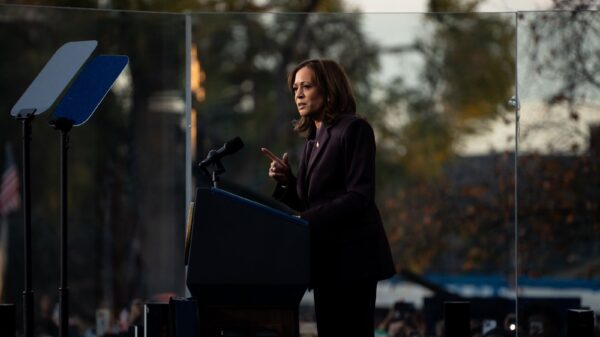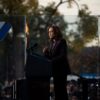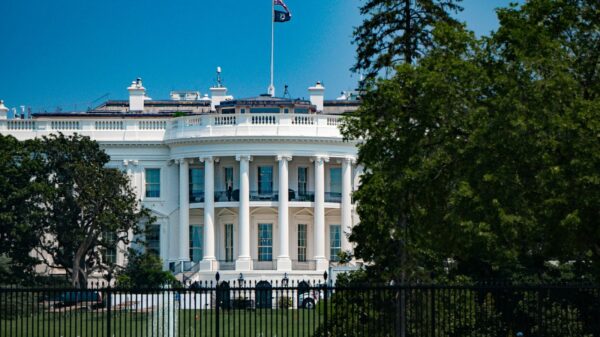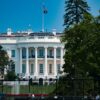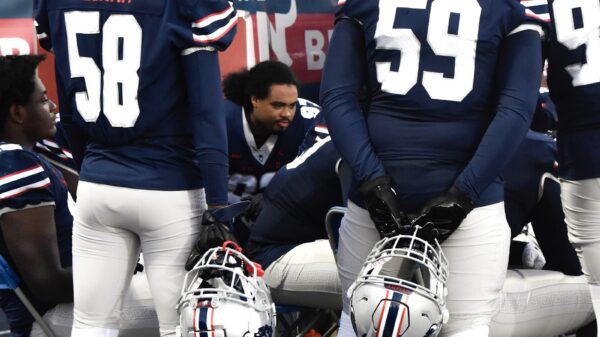
It was the beginning of fall semester when Alayna Kellogg logged on to Zoom for her Intro to Theatre class. At first, the class proceeded normally, but she noticed something wrong. Her professor would mute his audio and talk to people walking by him. He kept moving around.
“That’s when I realized he was actually teaching in a hallway,” she said.
Kellogg’s experience comes in the wake of Howard welcoming its largest freshman class this fall. According to the previous Howard Forward Five-Year Plan, by 2030, the university anticipates exceeding 15,000 students. With the current total student enrollment now approximately 13,500, Howard is close to reaching this goal.
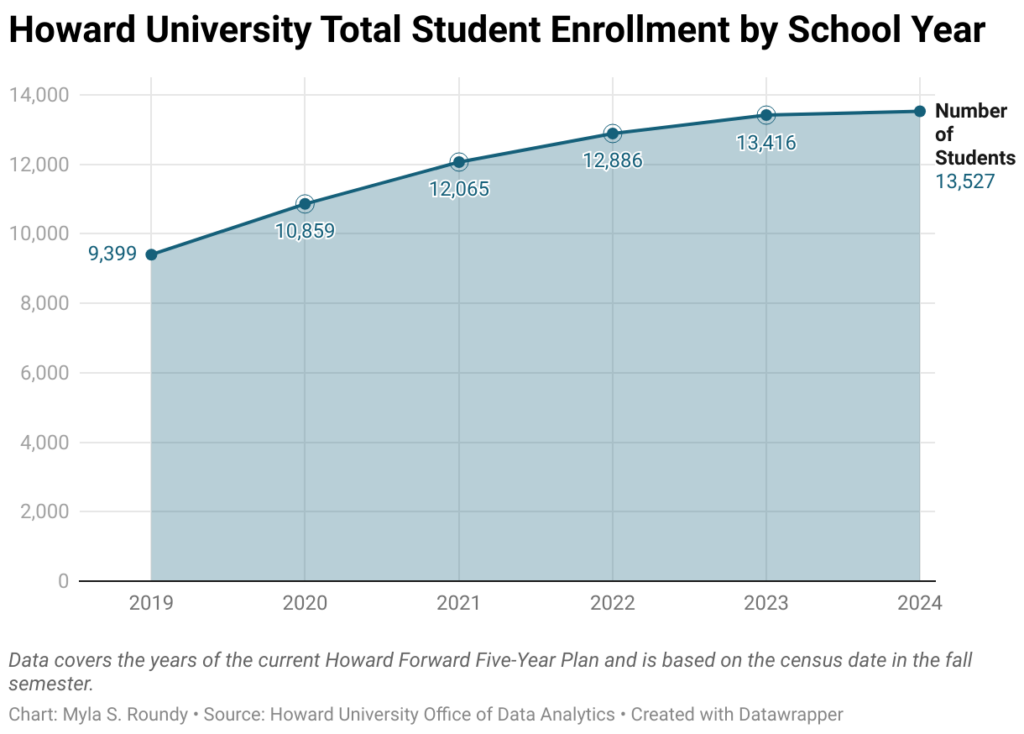
The Hilltop spoke with 16 people including professors, students and faculty members about their experience with the increase in student enrollment. The team also reached out to an additional 10, but they did not respond in time for publication.
Lack of Classrooms
With the growing number of students on campus, many are dealing with scheduling conflicts and a lack of classroom space.
“My class, British Literary Foundations, was assigned to IRB [Interdisciplinary Research Building] 106, which turned out not to be a classroom and should not have been assigned to any classes,” Elisa Oh, an English professor at Howard said.
Oh was then assigned to multiple other classrooms that had already been reserved for other courses.
“This level of confusion and disruption is understandable if it happens once,” she said. “However, when it happens two, three and four times, it begins to have a serious impact on how much instruction can happen in any class.”
Dating back to 2022, political science professor Charles Conyer’s spring Intro to Political Science course was placed in a classroom that couldn’t contain his full class size.
He said, “That particular class had 62 students signed up, but literally only seats for like 42.”
A week later, he switched the class from in-person to virtual.
The English and political science departments are a part of the largest school on campus, the College of Arts and Sciences (COAS). According to the Dean of COAS, Rubin Patterson, this semester there are 4,564 students in the school with 1,708 courses being offered within the school.
“The number of classrooms controlled by the college is limited,” he said.
He also noted that classrooms are mainly controlled in a central inventory so it is hard to determine how many are directly assigned to COAS.
Other professors have experienced similar issues, including Theater Arts and Movement lecturer and Howard alumnus Travis Xavier, who graduated in 2021.
Xavier teaches the Intro to Theater course taken by Kellogg, among other courses. While trying to complete the onboarding process, Xavier said he encountered organizational delays that were outside of his department’s control.
At the beginning of the school year, Xavier relied on another professor to initially communicate with his students about how they would meet. The course is hybrid, but due to the lack of space in the Chadwick A. Boseman College of Fine Arts building, they have only met virtually.
Although not meeting as a large group, Xavier still needs a space to teach his students. While he has taught from an office space, he also has had to teach his class from a hallway, via Zoom.
Kellogg, who is a mechanical engineering major from Detroit, recalled how hard it was to learn from Xavier while he was in the hallway.
“There were subtle interruptions due to people passing by, so I feel like we weren’t able to be taught the proper way of how to do things,” she said.
Xavier said he would teach “out of the hallway, any empty space, in my office sometimes, just trying to make it happen.”
Despite all of the challenges, he noted, “At Howard we are resilient, so we’re going to make do with whatever we can.”
Joshua Myers, an Afro-American studies professor, also dealt with issues caused by the increased number of students this semester.
According to Myers, the number of students is not in accordance with the number of professors.
“We teach more students than we really have the capacity to teach,” he said. “And the support hasn’t always been there for the increase that we’re experiencing.”
Within COAS, where the department of Afro-American Studies is located, Dean Patterson reported that there are 502 professors on staff.
Overcrowding of Campus Spaces
The overcrowding of study spaces is another concern for students.
“It’s been harder to find space,” Tee Caston-Williams, a junior film major from Tampa, Florida said. “Usually I go into Douglass or the Undergraduate Library to do assignments or just relax, but that’s more difficult now because of all of the new students. Same for the Health Sciences Library and Blackburn.”
Cara Anderson, a sophomore psychology major from Chicago, shared similar sentiments.
“I don’t even go to UGL [Undergraduate Library] because of the freshmen,” said Anderson. “Even the Health Sciences Library is still kind of crowded.”
Danica White, Howard’s first-year engagement librarian, spoke about how the increased social aspect of Howard’s libraries aligns with libraries outside of the university.
“We’re seeing libraries across the country, whether they be public, academic or special libraries, kind of move away from this idea of a quiet study space to being more of a collaborative space,” she said. “And so, that’s what I think that the Howard libraries were doing with the Undergraduate Library.”
For students who like a quieter space, she suggests utilizing the study rooms. White recognized that there are not a lot of study rooms, but recommends students reach out to their subject librarians who may be able to aid in finding them additional quiet spots.
Her colleague, Shelby Evans, the collection services librarian, spoke about the temporary closure of Founders Library.
“I know a lot of people are disappointed that they’re not able to work in the Founders Library—it’s iconic. It’s a symbol of Howard,” she said.
Evans continued commenting on the closure saying, “We’re all experiencing this together” and in the meantime, “We should all just be mindful of one another’s space.”
More Virtual Classes
This academic school year, some students feel that they are taking more virtual classes than necessary.
Onyinyechukwu Ikeako, a sophomore nursing major from Baltimore said that her main required courses, such as microbiology and anatomy & physiology are online this semester, while the courses that are not specific to her degree are in-person.
“I would hope that [my major courses are] in person so I can get a feel of what’s going on, and have better access and better communication with my professors,” she said.
Howard alumna Brionna Seward agreed and said that classes should be in-person.
Seward entered the university in Fall 2020, at the height of the pandemic when classes were online for the entire Howard community. She graduated in 2024 with a bachelor’s degree in nursing.
“I feel like it’s just harder to focus on the class. Because with the online aspect, you can get distracted,” Alexandria Johnson, a freshman English major from Boston said.
Behind the Scene Complications
Certain professors feel that the university should invest more in the school laboratories to fund the growing student body.
Fatima Jackson, the former director of the W. Montague Cobb Biological Anthropology Laboratory and biology professor, said, “If you have adequate resources it doesn’t matter if you have 100 students, if you have 10 students you know you can expand using your resources.”
She advised that the university take advice from other HBCUs such as Bowie State University which collaborates with the University of Maryland in their laboratories.
When asked about areas the university could improve, both students and faculty cited the lack of effective communication and accommodation from the university.
“I feel like the admin should do a better job of communicating with students,” Caston-Williams said. “They should have said, ‘Hey, because our student body has gotten bigger, you’ll notice changes to XYZ,”
Expressing his similar disappointment, Professor Myers shared his encounters with poor communication from the university.
“Administration hasn’t communicated with me at all. We need to know the number of students earlier,” he said. “If we knew the number earlier, departments could make hiring decisions more efficiently.”
On communication issues, Howard alumna Seward said, “There should be no reason why we literally have a term for it—the Howard runaround.”
Next Steps
Senior Vice President Young said, “We are fortunate and blessed as an institution to have the challenge of growth rather than the challenge of decline.”
He also mentioned how, in general, HBCUs are experiencing this growth while other higher education institutions are shrinking.
“If we had that circumstance, then dare I say the student experience would be much more difficult,” he said.
However, students and faculty regard the situation differently.
“Going forward, I feel like they should decrease the amount of students they accept,” Caston-Williams said. “Because if they continue to increase the number of students, these problems are going to become out of control and they’ll be too far gone to solve it at that point.”
On decreasing the amount of students accepted, sophomore Anderson agreed with Caston-Williams.
“Howard just really needs to realize that they can’t take everyone that applies,” she said. “Either guarantee that you can help students, or don’t take as many.”
Professor Myers said that the quality of education at Howard will be improved if more support is provided to faculty.
“The classroom needs to be the most memorable thing that happens to a Howard student,” he said. “I think we have to bring that back somehow by making the lives of our professors easier, not overwhelming them with registration and administrative issues.”
Copy edited by Camiryn Stepteau




